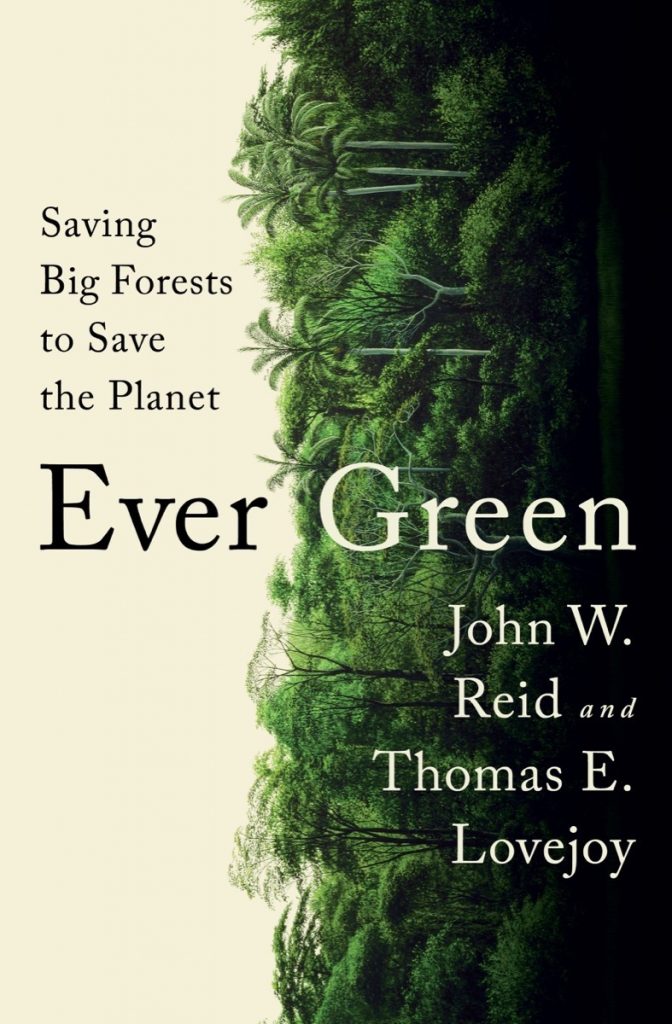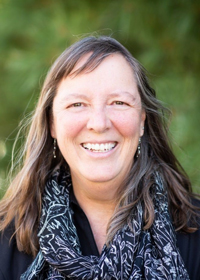Fulbright Chronicles, Volume 2, Number 2 (2023)
Author
Jocelyn L. Aycrigg

John W. Reid and Thomas E. Lovejoy, Ever Green: Saving Big Forests to Save the Planet. Thomas E. Lovejoy was the Fulbright 50th Anniversary Distinguished Lecturer to Cyprus and Turkey in 1996.
Ever Green is a wonderfully written book on a highly relevant and timely topic. As is readily apparent, our world is changing, and the speed of this change is challenging for species, including plants, wildlife, and humans. Our own human activities are driving these changes through releasing large quantities of carbon into our atmosphere.
We have two main avenues to stabilize or reduce our carbon emissions and slow the speed of change. The first is to reduce the amount of carbon released into the atmosphere. This is the avenue the Intergovernmental Panel on Climate Change (IPCC) is often informing policymakers how to do—without great success to date. The second avenue is keeping our existing biosphere intact, which includes megaforests, in order to store vast amounts of carbon and to decarbonize the atmosphere through photosynthesis.
As stated in Ever Green, it is more affordable and effective by a factor of seven to keep megaforests, rather than regrowing them after deforestation. Keeping megaforests intact is vital because, as Reid and Lovejoy point out, plants have decarbonized our atmosphere twice before, and it’s likely they can do it again.
Ever Green focuses on five megaforests across the world: the Taiga in northern Russia; the Boreal in northern North America; the Amazon in northern South America; the Congo in central Africa; and the island forest split between Papua New Guinea and Indonesia. Reid and Lovejoy describe the unique characteristics of each of these forests, illustrate why they are considered megaforests, and explain the importance of their biodiversity and human communities.
Reid and Lovejoy tell wonderful stories of enchanting experiences and adventures in these megaforests.
The fabric of conservation is tied together with the local communities in and around these megaforests, and Reid and Lovejoy spend about half of the book introducing the people working to conserve these special places. In the Congo Forest, you meet Gaston Abea, a member of a Pygmy tribe, who is conducting his own research on western lowland gorillas under the larger umbrella of the Goualougo Research Project. He has documented the techniques used by gorillas for finding and eating forest truffles. You also meet Tamasaimpa, a member of the Marubo tribe in the Amazon Forest of Brazil. He works with the federal National Indian Foundation (FUNAI) to protect tribes who have not been in contact with people in our modern world; they remain unaware of the world outside their area of the Amazon Forest. These tribes have unique skills and awareness of their forest environments on which their survival depends; these people feel the living pulse of the wildlife, trees, and land. However, if these uncontacted tribes are contacted, Tamasaimpa ensures they survive their encounters and the diseases of the modern world.
Reid and Lovejoy share a story told by Tamasaimpa in which several Indigenous tribes in the Amazon Forest learned they had the power to protect their forest. In the story, with the support of Tamasaimpa, members of the Matsés tribe took possession of river barges headed to Peru loaded with illegally harvested mahogany trees from their tribal lands which caught the attention of the Peruvian police. You will have to read the book to learn the end of the story, but it was a turning point in how Peruvian and Brazilian governments viewed the Indigenous tribes in the Amazon Forest
The efforts of these local communities and their Indigenous populations within megaforests are benefitting all of us because, for example, the probability of carbon stored in an Indigenous-controlled forest being released into the atmosphere is thirty-six times lower than for unprotected land and six times lower for protected land in the Amazon Forest. Additionally, research summarized by Reid and Lovejoy shows that higher amounts of biodiversity within megaforests help store more carbon, thereby keeping it out of our atmosphere and helping our world reduce its carbon emissions.
Reid and Lovejoy tell wonderful stories of enchanting experiences and adventures in these megaforests which draw the reader into these mystical places on which so much biodiversity and numerous human communities depend. There is the too-close-for-comfort encounter with a forest elephant in the Congo Forest that could have ended tragically if their Pygmy guide had not spotted the animal and had them run for their lives in the opposite direction. They also observed the unique phenomenon of co-feeding between apes. When the rare fig tree species, Ficus recurvata, produces fruit once every thirteen months, both gorillas and chimpanzees feed together on the same tree. This behavior has been observed only in the Goualougo Triangle within the Congo Forest.
For many of us Fulbrighters, including myself, the stories told by Reid and Lovejoy and the efforts of so many people to keep these megaforests and their Indigenous communities intact, are close to our hearts. They encourage me personally to continue my efforts to protect nature despite all the bad news about our environment. Thomas Lovejoy passed away in December 2021 after a long and highly distinguished career as a conservation scientist; he was known as “the Godfather of Biodiversity.” He will be sorely missed, but this book is a fitting finale for our fellow Fulbright scholar.
John W. Reid and Thomas E. Lovejoy, Ever Green: Saving Big Forests to Save the Planet. New York: W.W. Norton & Company, 2022. 302 pages, $17.99.
Biography

Jocelyn Aycrigg, a Fulbright Scholar to Tbilisi, Georgia, 2021-2, grew up in Colorado and has lived in California, upstate New York, Illinois, and Idaho. She received her PhD from the University of Idaho and has spent most of her 30+ year career in academia where her research focuses on landscape and wildlife ecology by providing a science-based context to conservation efforts. She has collaborated with numerous colleagues at universities, land management agencies, and non- governmental organizations, and has published her research in top peer-reviewed journals, including BioScience and Ecological Applications. She currently lives in Idaho where she enjoys rafting, hiking, and morel mushroom hunting. She can be reached at aycrigg@uidaho.edu
